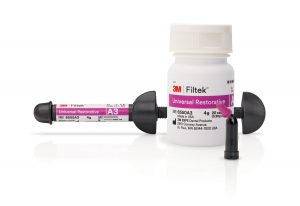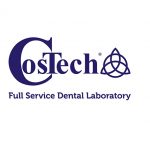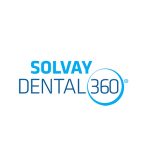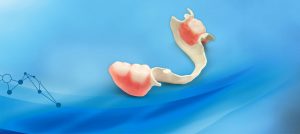It’s no understatement to say that the way people view dental aesthetics has changed beyond recognition in a relatively short time. It was not long ago that the majority of people seeking dental restorations would be satisfied with good function alone. This meant that clinicians could offer measures such as full-metal crowns and other less aesthetic solutions without a second thought.
However, whether it is due to the rise of social media and the pressures on image this brings, or simply a better understanding among patients that more aesthetic options are becoming available, natural-looking restorations have now become the first choice for many people, including NHS patients.
In response to this, CosTech Dental Laboratory introduced Monolith Full-Contour Zirconia – a strong, aesthetic crown option which, for the first time, made a full zirconia option available to NHS patients. Now, one year on, CosTech reveals how Monolith has performed and why zirconia crowns are such an excellent choice for patients and practices alike.

Why offer zirconia crowns?
Providing NHS patients with an aesthetic alternative to treatment provides many benefits for both your practice and your patients. Firstly, zirconia as a material has exhibited numerous advantages over other dental materials. These include better aesthetics even under challenging conditions such as UV light, better strength than other aesthetic options such as resin crowns and a lower plaque affinity.[i]
It’s likely that offering a unique aesthetic option such as Monolith will impact practices positively too. Patients are always on the look-out for innovative treatments, and as previously mentioned, dental aesthetics are now hugely important. Therefore, by offering Monolith you will easily be able to better attract new patients who are specifically searching for an aesthetic option in the price range. The result, is business growth and improved sustainability.
In just the first 11 months of Monolith Full-Contour Zirconia being available, over 600 dentists have fitted over 6,500 units. Each crown unit is available at just £29.95, including free delivery to and from the lab.
Following feedback from CosTech customers, the lab is now also offering Monolith Zirconia Maryland Wings. These are priced at £59.90 for one pontic and one wing, and £89.85 for one pontic and two wings.
Aesthetics, achieved
Monolith Full-Contour Zirconia offers a natural-looking white aesthetic, and is available in all VITA shades from A-D. In a survey carried out with Monolith users, professionals rated the aesthetics of the product as 4.6 out of 5 on average. This not only proves that people are really happy with the aesthetic outcomes of the product, but it also demonstrates the versatility of the material to work in a broad range of aesthetic challenges.
A functional option
Although the importance of dental aesthetics continues to rise, function will always be of primary concern. Monolith Full-Contour Zirconia is a fully-functional option for NHS patients, scoring 4.7 out of 5 for functionality on dentist surveys!
An excellent fit
When it comes to offering crowns, you need to ensure that you can achieve a perfect fit. In a survey of dentists who have been using Monolith Full-Contour Zirconia, the crowns were scored at an impressive 4.5 out of 5 for fit.
One of the core design features of Monolith Full-Contour Zirconia is that it’s easy to adjust, and in the same survey of users, clinicians voted the ease of adjustment of the material very highly.
However, it’s necessary to appreciate that Zirconia needs to be adjusted in a different way than other materials as it has different material properties. Some traditional tools could scratch or damage the surface of these restorations and impact the aesthetics.
To combat this, CosTech has created special Monolith Adjustment and Polishing Kits. Containing everything clinicians need to achieve a life-like lustre on Monolith restorations, as well as adjust them if necessary, these kits comprise of seven rotaries in an autoclavable case. Two adjustment burs, two pre-polishers and two mirror polishers help clinicians to always achieve an aesthetic and perfectly placed outcome, and in the event of a monolith needing removal, there is also a straight parallel bur included that has been specifically designed for this purpose.
These kits are available at a special price of just £99.95 for a limited time.
The solution you can rely on
Patient expectations are constantly shifting, so it makes sense to offer all of your patient list an aesthetic, versatile restorative solution. Monolith Full-Contour Zirconia from CosTech Dental Laboratory is not only a strong, reliable and aesthetic option for NHS patients, but it also comes highly recommended by CosTech clients, with a rating of 4.7 out of 5 over all.
To find out more, please contact CosTech today.
For more information about CosTech Dental Laboratory, please visit www.costech.co.uk or call 01474 320076
[i] Cionca, N., Hashim, D., Mombelli, A. Zirconia Dental Implants: Where Are We Now, And Where Are We Heading? Periodontol 2000. 2017 Feb; 73(1):241–258.





 For various reasons – which we needn’t go into here – this is a challenging time for businesses that operate in the UK. Indeed, some sectors have quite a pessimistic view of the future, with projections casting a cloud of concern over many companies in different industries. However, it seems that dentistry may be going its own way.
For various reasons – which we needn’t go into here – this is a challenging time for businesses that operate in the UK. Indeed, some sectors have quite a pessimistic view of the future, with projections casting a cloud of concern over many companies in different industries. However, it seems that dentistry may be going its own way.
 It’s no understatement to say that tooth whitening continues to be one of the most popular beauty trends in the UK. But why has this treatment suddenly gained so much momentum within society, and what about the challenges treating those with bleached dentition can create?
It’s no understatement to say that tooth whitening continues to be one of the most popular beauty trends in the UK. But why has this treatment suddenly gained so much momentum within society, and what about the challenges treating those with bleached dentition can create?








